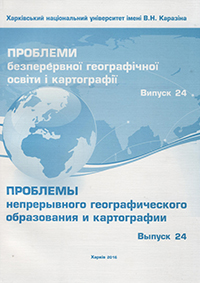Methodical bases of geodemographic forecasting
Abstract
The article deals with methodological features of the forecast of population size and composition. The essence and features of probabilistic demographic forecasting, methods, a component and dynamic ranks are considered; requirements to initial indicators for each type of the forecast are provided. It is noted that geo-demographic forecast is an important component of regional geo-demographic characteristic. Features of the demographic forecast development by component method (recursors of age) are given, basic formulae of calculation, including the equation of demographic balance, a formula recursors taking into account gender and age indicators, survival coefficient are presented. The basic methodical principles of the demographic forecast are given by an extrapolation method (dynamic ranks), calculation features by means of the generalized indicators, such as extrapolation on the basis of indicators of an average pure gain, average growth rate and average rate of a gain are presented. To develop population forecast, the method of retrospective extrapolation (for the short-term forecast) and a component method (for the mid-term forecast) are mostly used. The example of such development by component method for gender and age structure of the population of Kharkiv region with step-by-step explanation of calculation is provided. The example of Kharkiv region’s population forecast development is provided by the method of dynamic ranks. Having carried out calculations of the main forecast indicators by administrative units, it is possible to determine features of further regional demographic development, to reveal internal territorial distinctions in demographic development. Application of separate forecasting methods allows to develop the forecast for certain indicators, however essential a variety, nonlinearity and not stationarity of the processes constituting demographic development forces to look +for new approaches and techniques of geodemographic forecasting.
Downloads
References
2. Libanova, E.M. ed (2006). Kompleksnyy demohrafichnyy prohnoz Ukrayiny na period do 2050 r. [Comprehensive demographic forecast of Ukraine till 2050]. Ky`yiv: Ukrayins'kyy tsentr sotsial'nykh reform, 138.
3. Mezentsev, K.V. (2005). Suspil'no-heohrafichne prohnozuvannya rehional'noho rozvytku [Human-geographical forecasting of regional development]. Ky`yiv: Kyyivs'kyy universytet, 253.
4. The official site Main Department of Statistics in the Kharkiv region. Available at: http: //ukrstat.kharkov.ukrtel.net/ua
5. Pidhornyy, A.Z. (2010). Demohrafichna statystyka [Demographical statistic]. Odesa: ODEU, 165.
6. Borisevich, V.N., Kandaurova, H.A. (ed.) (2001). Prognozirovanije i planirovanije jekonomiki [Planning and forecasting of the economy]. Minsk: Interpresservis; Jekoperspektiva, 380.
7. Sehida, K.Yu. (2016). Geodemografichny`j prognoz Xarkivs`koyi oblasti (za dopomogoyu metodu ekstrapolyaciyi) [Heodemohrafichnyy forecast Kharkiv region (using the method of extrapolation)]. Proceedings of Bulletin of Kharkiv National universytet: Geology-Geography-Ecology, 43. 164-174.
8. Sehida, K.Yu. (2015). Metody`chni rekomendaciyi do vy`konannya kursovoyi roboty` z dy`scy`pliny` «Geografiya naselennya z osnovamy` demografiyi» [Methodical recommendations to performance of course work on discipline «Geography of the Population with the basics of Demography»]. Xarkiv: XNU, 54 s.
9. Stetsenko, S.H. (2005). Demohrafichna statystyka [Demographical statistic]. Ky`yiv: Vyshcha shkola, 415.
10. Yavors'ka, V.V. (2013). Rehional'ni demohrafichni protsesy v Ukrayini [Regional demographical processes in Ukraine].
Kam'yanecz`-Podil`s`ky`j: Aksioma, 384.





